Proper drainage is one of the things you need to watch out for in your HVAC system. You may wonder if proper drainage includes capping condensate lines. So, we researched and looked into whether you should do it, which is what we found.
It is unnecessary to cap your condensate lines, but it won't hurt to do so. In some instances, capping the line resulted in blockage. A significant benefit of capping your drain lines is your unit's increased efficiency.
Read on as we discuss further the benefits of capping your condensate line. We'll also tackle how drain caps cause blockage in some condensate lines. We'll also share some tips on maintaining your drain line to avoid overflowing and blockage.
What Are The Benefits Of Having Your Condensate Lines Capped?
One benefit of capping your drain lines is that it improves your AC unit's efficiency. Because the cap prevents the air from going down the drain and blowing out of your unit, it holds more air causing the room to get colder.
Another advantage is it aids in continuously draining your unit's condensate. The primary condensate line typically has a cap and trap, especially if it is located on the negative side. The water is forced out as a result of the air.
In addition, if you put a cap on, the condensate water won't drain into the emergency pan.
How Do Drain Caps Cause Blockage In Your AC Drainage System?
Capping the drainage can form clots around the condensate lines. So if you want to know if there is clotting present, you can observe the amount of water drained by your unit.
The ideal volume of drain water should be between 5 and 20 gallons of water per day. So if the collected volume is less than the ideal amount, there may be clotting in your condensate lines.
Do Drain Caps Cause Your AC To Overflow?
Yes. This is one of the main issues you might face when you cap your condensate lines. The water won't drain properly in the primary drain pipe because the air can't push the water, which causes the overflow.
How Do You Know If You Have Clogged AC Condensate Lines?
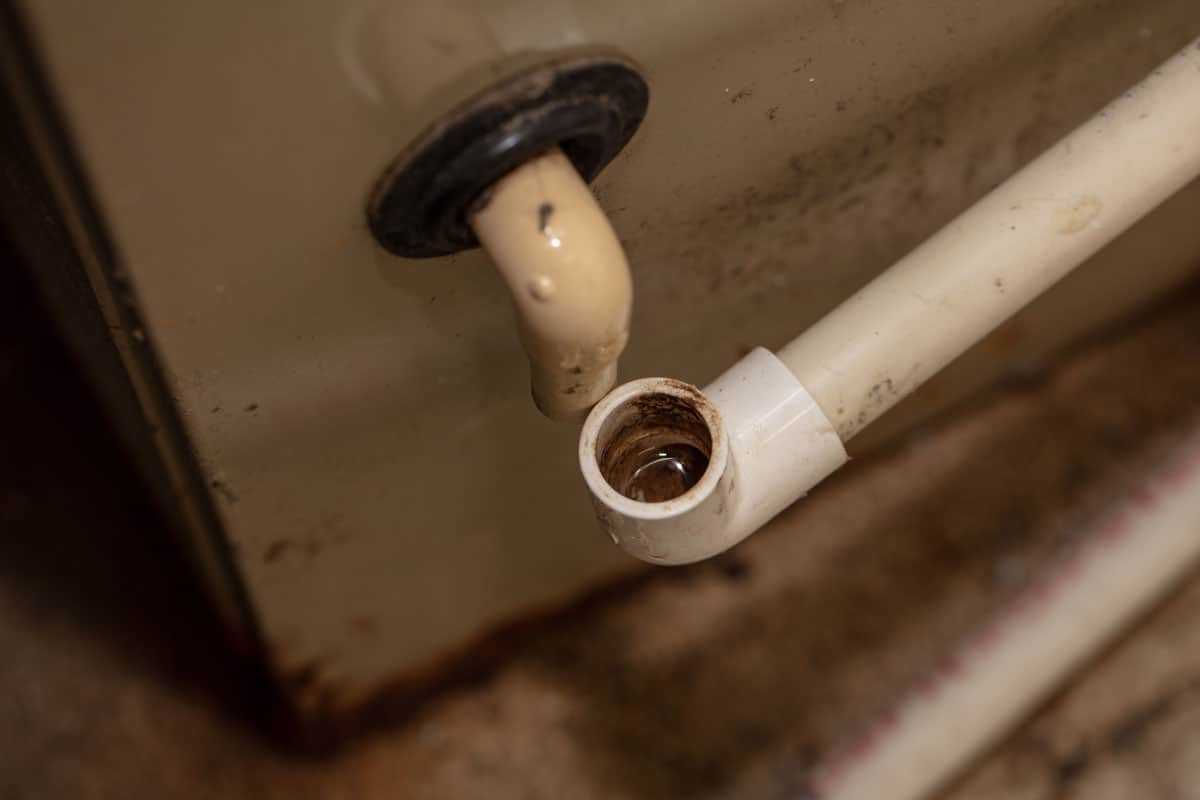
When you observe the following signs, you'll know that your AC condensate line is clogged:
- Standing water surrounding your outside unit is the most evident indication that your AC drain line is obstructed. A clogged drain pipe will cause water to collect around the unit. If you observe this happening, keep an eye on it for a few days to ensure the leak is coming from the HVAC unit. If so, get in touch with an HVAC specialist right once.
- Another sign is when you see the condensate pan full. The purpose of the pan is to act as a moisture collector in case the drain line is clogged.
- Mold can form inside a unit if moisture cannot escape to the outside and instead accumulates there. The mold is then spread throughout your house by your air conditioner. Mold and mildew growth is another sign of a clogged condensate line.
- Clogged drain lines can sometimes cause your air conditioner to turn off, stopping it from cooling and preventing a leak from occurring. It's time to call an HVAC specialist if your system switches off and then back on again instantly.
You must immediately take action to unclog the drain lines to avoid severe damage to your AC unit.
How To Unclog A Clogged Condensate Line
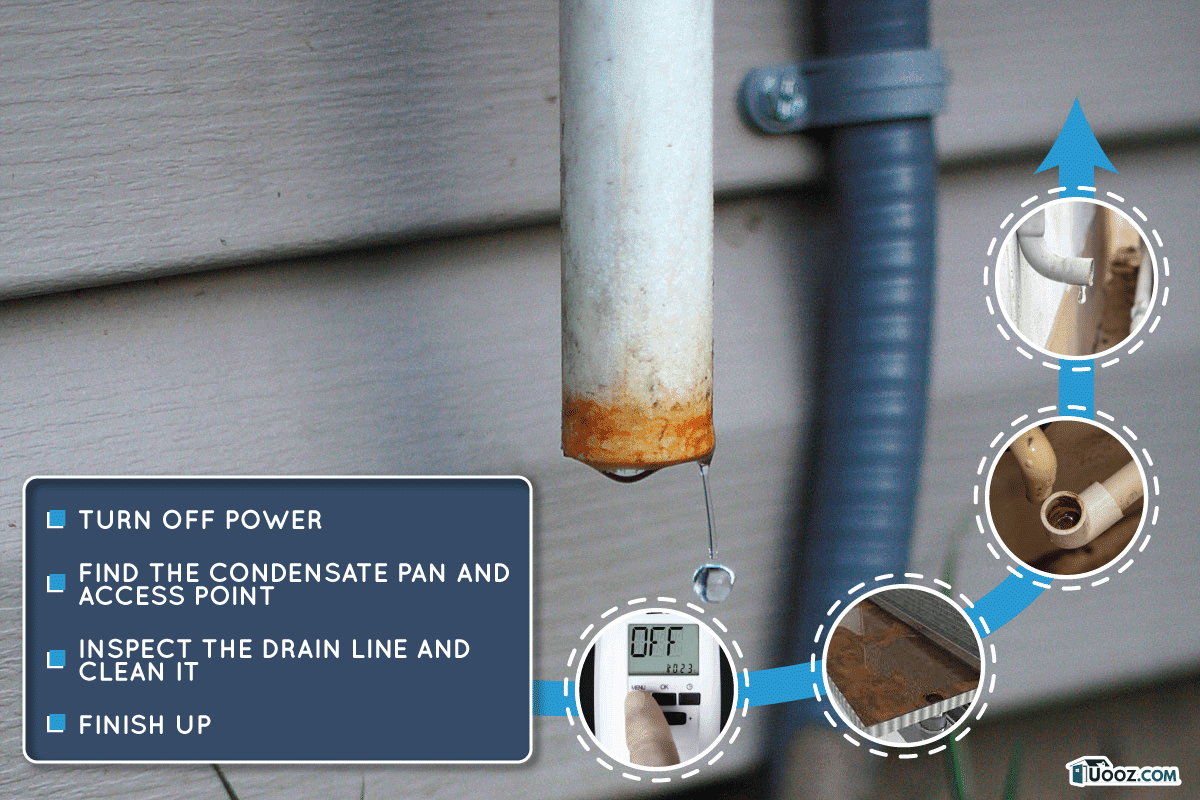
Here is a simple guide on how to clear your condensate line from blockage.
Turn Off Power
Before starting anything, make sure to cut off electricity to your unit by switching off the breaker and thermostat.
Find The Condensate Pan And Access Point
You can find it in your attic or utility closet, sometimes just beneath the indoor air handler. A detachable access panel might be placed over it.
A T-shaped vent with a cap covering the top of the drain line often serves as the point of access for a condensate drain line. To check for clogs and obstructions, you can unscrew the cap.
Inspect The Drain Line And Clean It
Check the drain line to see if there are clogs. You can manually clear any visible clogs; just make sure to wear protective gloves. If you cannot readily reach the clog, stop pushing it down further.
To clear the remaining clog, use a vinegar solution. Vinegar's excellent cleaning abilities are a result of its acidity.
After removing the cap, start by adding 1/4 cup of white vinegar to the aperture and stop when it is full. If the fragrance is too overpowering, you can also combine some warm water and soap with the vinegar.
Finish Up
After 30 minutes, rinse the drain pipe with water to remove the solution.
Check to see if the water is flowing normally. If not, the clog might be too big for you to remove on your own. To get assistance, speak with a licensed HVAC expert.
How Often Should You Clean Your Condensate Line?
To avoid any clogging, clean your drain every 30 days. This also eliminates any hazardous mold and mildew accumulation and ensures that your system keeps performing at its best.
Tips To Avoid Clogging Of Your Drain Lines
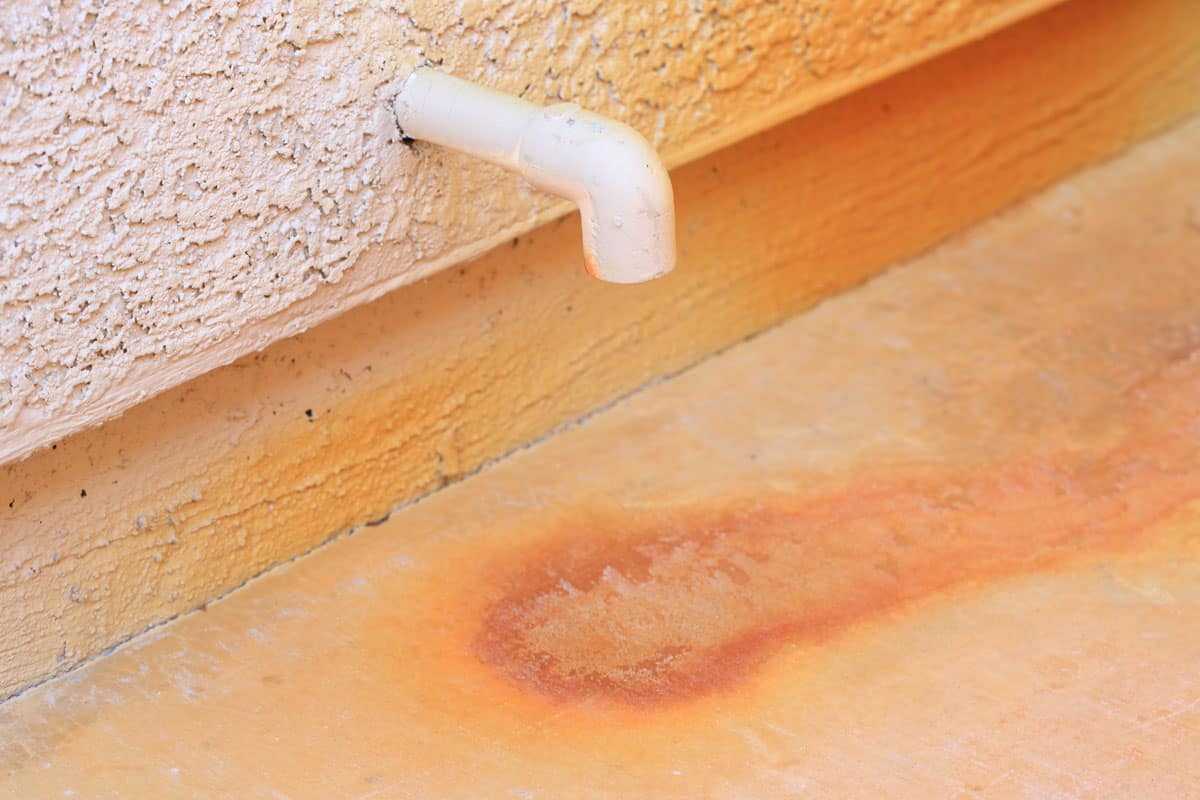
Clearing the drain line is an excellent initial step in servicing your air conditioner. But preventing upcoming drain line clogs also plays a role in maintaining the effectiveness of your AC unit.
You can maintain your drain line's cleanliness by doing the following tips:
Properly Slope Your Drain Line
An improperly sloped pipe is one of the most frequent reasons for AC drain line obstructions. So that water may easily drain away, the pipe should have a downward slope.
A correct angle enables efficient drainage. Water will accumulate in an improperly angled pipe, causing a clog over time.
The drain must have a minimum pitch of 1%, or 1/8" fall, for every foot of horizontal run, according to the IMC. In reality, using 1/4" of fall per foot is safer because it ensures appropriate drainage and leaves some margin for error.
Clear Your Drain Line Regularly
Additionally, it's a good idea to flush your AC drain line routinely. By doing so, you can assist keep the line free of any accumulation and maintain the proper operation of your AC unit.
Routinely Replace Your Filters
Another vital consideration is the requirement for routine filter replacement for your air conditioning system. This will aid in maintaining optimum airflow, enabling effective cooling and drainage.
Regularly Schedule The Service Cleaning Of Your AC Unit
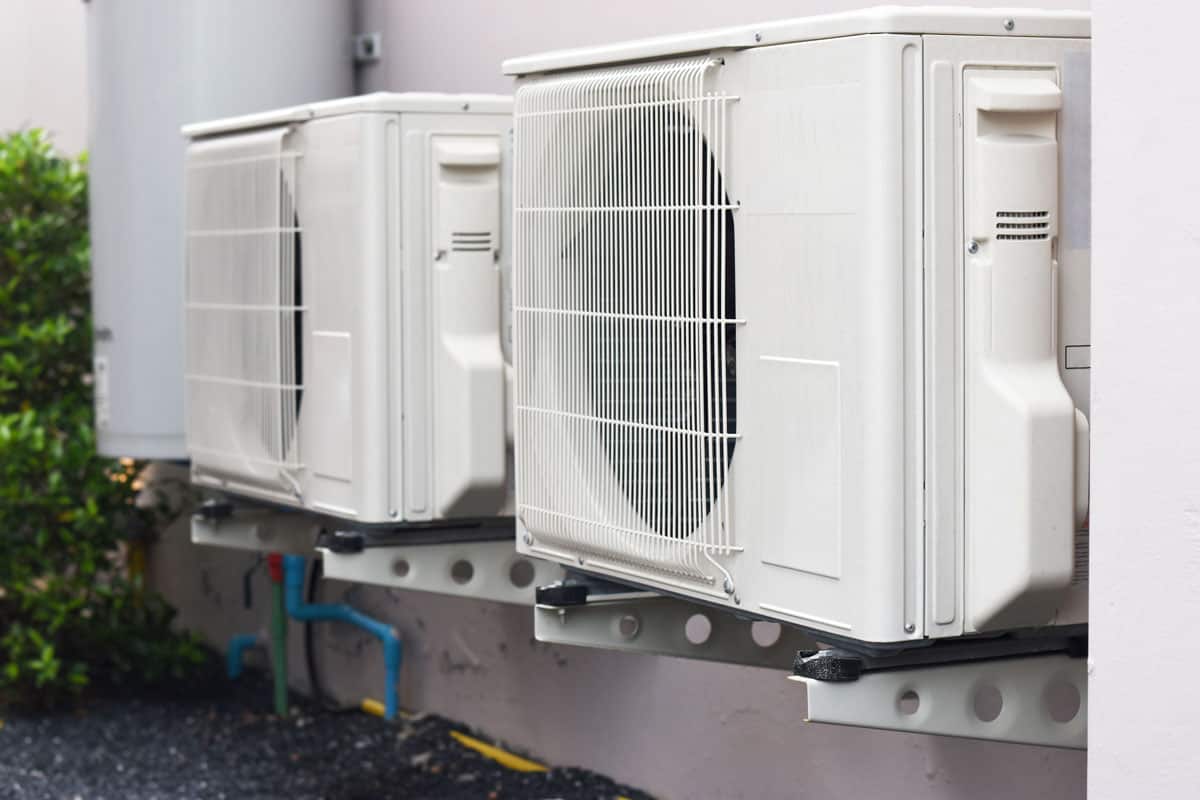
The necessity of replacing your air conditioning system's filters regularly is another crucial factor. As a result, cooling and draining will be made possible while preserving optimal airflow.
Integrate A Safety Switch To Your AC Unit
Installing a safety switch is one of the most significant ways to stop AC drain lines from becoming clogged.
If the line gets clogged, this switch will immediately shut down your air conditioner. Water can back into your home as a result of a blocked drain line, harming the AC unit and nearby structures.
By installing a safety switch, you may identify issues early and save your AC unit from being harmed.
Click here for this safety switch on Amazon.
Is It Necessary To Add Traps To Your Condensate Drain Lines?
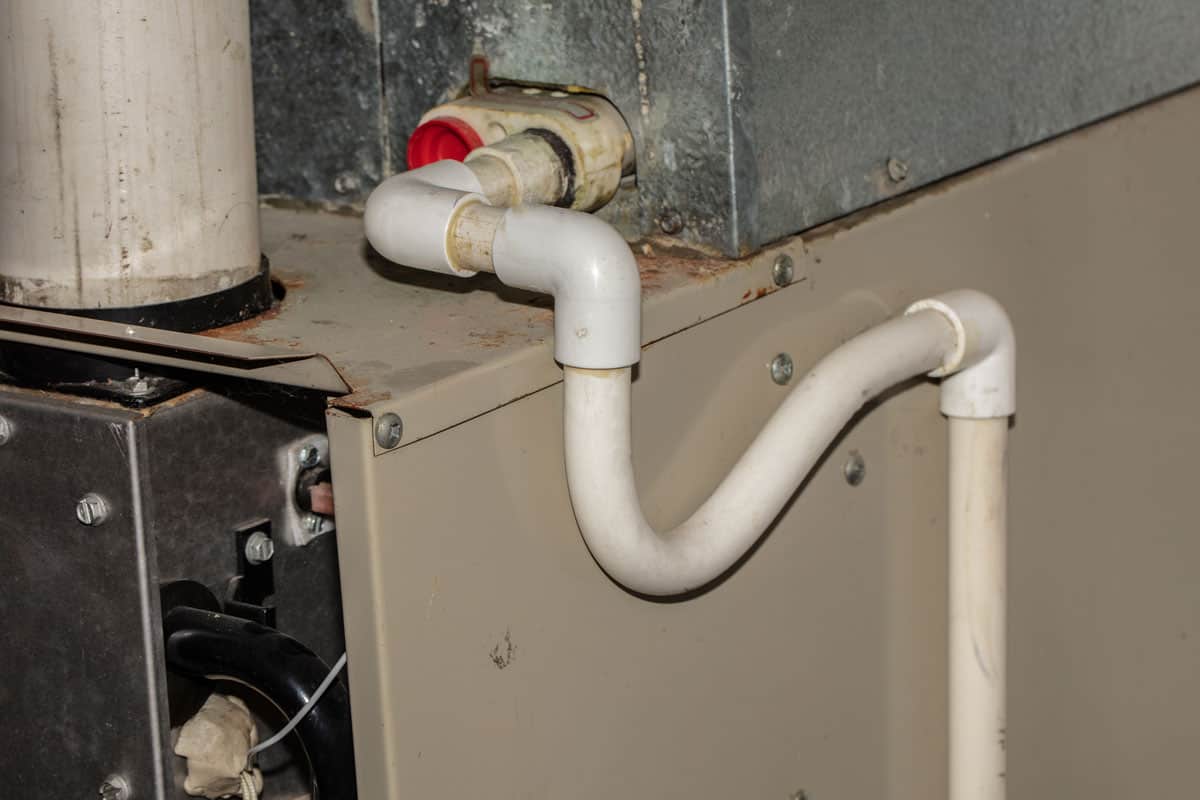
Manufacturers often require you to install a condensate trap when installing an air conditioner. This is to achieve energy efficiency regulations since air would pass through the opening without one.
A small amount of water is present in the condensate drain trap, which aids in preventing air from returning to the system and perhaps impair sensitive components.
However, it is crucial to watch the condensate drain trap and take care of any problems as soon as they appear because if it gets blocked or stops functioning correctly, it can result in several significant concerns.
Click here for this product on Amazon.
Final Thoughts
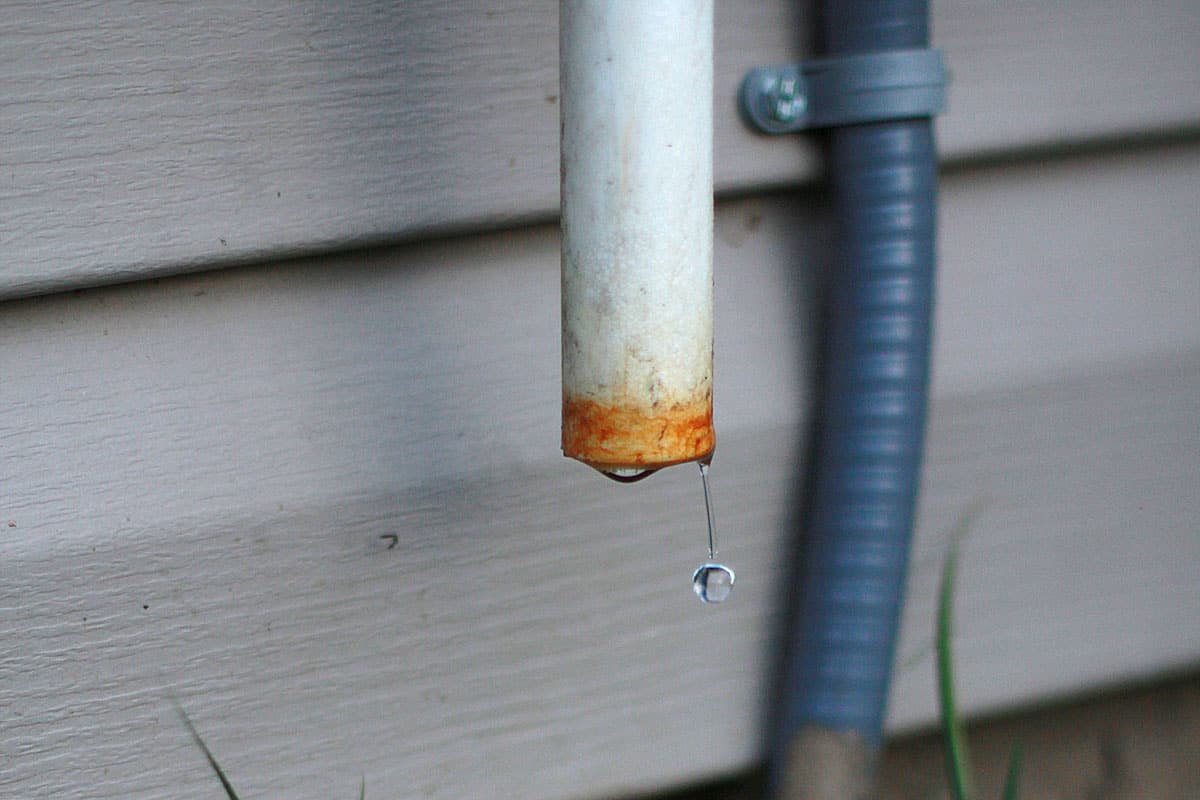
Given the benefits and drawbacks presented in this article, you can now choose whether to cap your condensate line.
Additionally, knowing the signs that you have a clogged drain and how to fix it is vital in maintaining the efficiency of your air conditioner unit.
Before you go, you can check out these other related articles:


